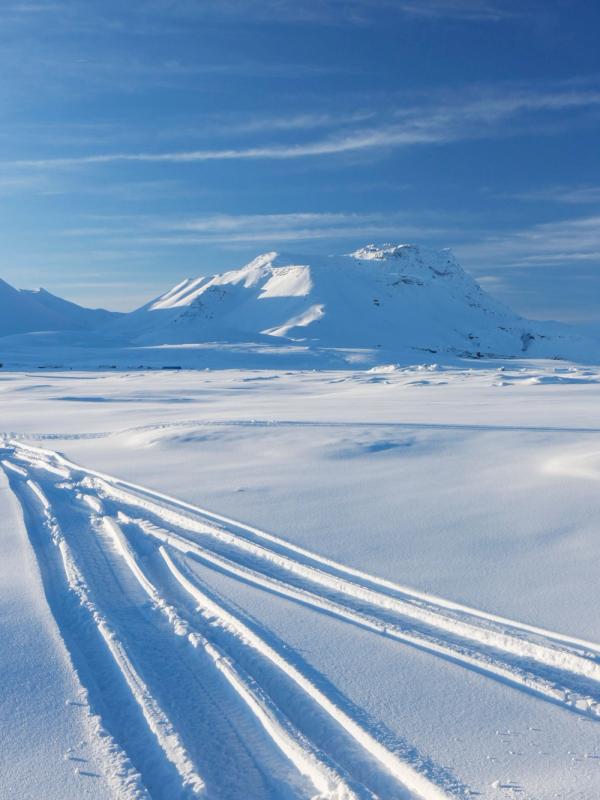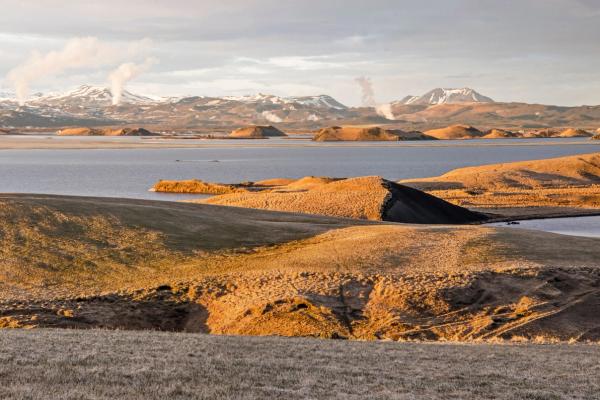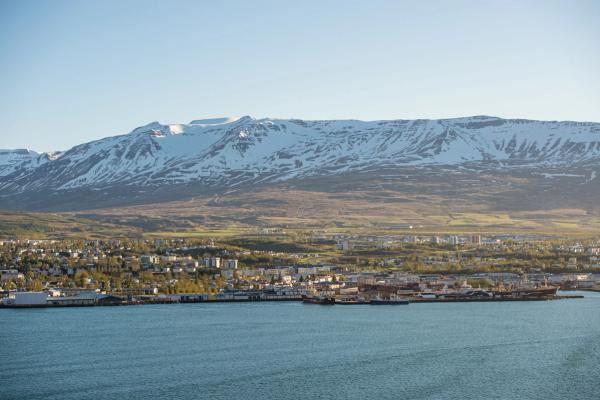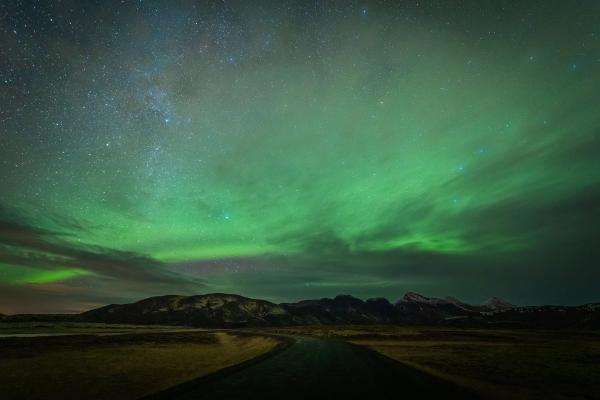
How Much Snow Does Iceland Get?
Iceland sits just below the Arctic Circle, so winter brings quite a mix of weather! Depending on where you are, you could find yourself surrounded by heaps of snow, or you might just get a light dusting that disappears quickly. If you’re heading to Iceland to experience the magical snowy landscapes or just want to know what kind of weather to expect, this guide will walk you through how much snow Iceland gets month by month and what the snowfall patterns look like across the country.
Key Takeaways
- Reykjavík gets moderate snow, while northern areas like Akureyri and the Westfjords get much more, often over 1 meter.
- Snow is common from November to March, but it melts quickly in Reykjavík, while the north holds onto it longer.
- The Highlands stay snowbound most of the year, while southern coastal areas get less due to warmer winds.
How Much Snow Does Iceland Actually Get?
When you picture Iceland, do you imagine a country blanketed in snow? Well, it’s not that simple. Snowfall here depends a lot on where you are and when you visit. In Reykjavík, the capital, the snowfall is pretty moderate, around 30-40 cm (12-16 inches) a year. But head up north to places like Akureyri, and you’ll see much more snow—over 100 cm (39 inches) annually!
And here’s the thing: Iceland’s weather is famously unpredictable. One day you might have a heavy snowfall, and the next, the snow’s melting in the sun or being washed away by rain. From November to March, snow is common, but coastal areas like Reykjavík tend to see the snow melt quickly, thanks to warmer winds from the ocean. Meanwhile, the Highlands and northern regions hold onto their snow a lot longer.

Snow Patterns in Iceland Month-by-Month
Snowfall in Iceland, like in most of the countries, depend a lot on the time of the year. Here’s a monthly breakdown.
January
In January, Iceland is deep into winter. Snow is common everywhere, especially in Reykjavík, though it doesn’t always stick around because of frequent thaws. In Reykjavík, snow depth is usually between 10-25 cm (4-10 inches), but in the north, places like Akureyri can easily have snow over 50 cm (20 inches). The Westfjords, famous for their heavy snow, can have snowbanks several meters high in rural and mountainous areas. The Highlands? They’re buried under deep snow by now.

February
February feels much like January. In Reykjavík, snow falls but melts off and on, while the northern regions and the Westfjords continue to pile up snow, often reaching up to 1 meter (3.3 feet) in some spots. The Highlands are still blanketed in snow, and traveling there is a real challenge, if not impossible.

March
As the days start getting longer in March, snowfall begins to ease up—at least a little. Reykjavík sees fewer snowfalls, and what does fall begins to melt more frequently. But in the north and the Highlands, winter is still in full swing. Akureyri and Ísafjörður often have snow over 100 cm (39 inches), and snowstorms can still blow through, especially in the Westfjords.

April
April is when spring starts knocking on Iceland’s door. Reykjavík might still get snow, but it’s less frequent, and you’ll start to see green poking through the melting snow. The average snow depth in Reykjavík drops below 10 cm (4 inches), and in some years, there might not be any snow at all. Northern Iceland, though, is still holding onto winter, and places like Akureyri are great for skiing. The Highlands stay locked in snow for now.

May
May really kicks off spring in most of Iceland. Reykjavík and the southern regions rarely see snow, though the Highlands and northern parts of the country might still get a few light snow showers. The snow in the Highlands is starting to melt, but the glaciers, like Vatnajökull, hold onto their snow for a while longer.

June, July, August
Summer in Iceland means no snow in most places—except the highest elevations. Glaciers like Vatnajökull and parts of the Highlands keep their snow and ice all year round, but the rest of the country is green and mild. Reykjavík and the lower regions are completely snow-free during these months.

September
Snow begins to make a comeback in September at higher altitudes. Reykjavík stays mostly snow-free, but the northern regions and the Highlands might start seeing some light snow. While rare, snowstorms can happen in the north, especially in the mountains.

October
October is when snow starts to creep back into Iceland. Reykjavík might see light snow here and there, but it’s the northern regions, the Westfjords, and the Highlands where the snow really starts building up. By the end of the month, snowstorms are possible, and in the north, the first signs of winter are showing.

November
By November, winter is settling in across Iceland. Snow becomes more regular in Reykjavík, though it often melts quickly. Northern towns like Akureyri, Ísafjörður, and the East Fjords begin to accumulate snow, with depths reaching 20-30 cm (8-12 inches). In the Highlands, deep snow makes travel nearly impossible.

December
December is full-on winter mode, with snow covering most of Iceland. In Reykjavík, the snow might melt fast because of the coastal weather, but up north, snow is sticking around. The Westfjords, Highlands, and northern towns like Akureyri get heavy snowfalls, sometimes over 1 meter (39 inches). Winter sports like skiing are in full swing, and the snow adds a festive touch to the landscape.

now Across Iceland’s Regions
As expected, and despite it being a relatively small country, snow patterns are also different in the different regions of Iceland.
Reykjavík and South Iceland
Reykjavík gets moderate snow between December and March, with around 30-40 cm (12-16 inches) annually. Snow rarely piles up because the warmer coastal winds often melt it by midday. The southern towns like Vík follow a similar pattern, but inland spots like Þingvellir can see more accumulation.

North Iceland
The north is where the serious snow happens. Akureyri, for example, gets over 100 cm (39 inches) of snow every year. It’s a winter wonderland, perfect for skiing and other snow sports. The Westfjords also see a ton of snow, with frequent storms and snow depths that can reach several meters.
East Iceland
East Iceland’s fjords create varied snowfall conditions. The mountains get heavy snow, while coastal areas often see the snow melt quickly. Inland regions and mountain passes stay snow-covered for much of the winter.
West Iceland
West Iceland, especially the Westfjords, is one of the snowiest places in the country. Frequent storms cause deep snowdrifts, especially in rural and high-altitude areas. Travel can be tough in winter, with snow depths reaching several meters in some areas.

The Highlands
The Highlands are Iceland’s snowiest region. Deep snow and frequent storms make this area inaccessible for most of the year. Roads are closed in winter, and the snow stays until spring or even summer in some spots, particularly around the glaciers.
Conclusion
Snow in Iceland can vary a lot depending on where you are and what time of year you visit. Reykjavík has milder winters with on-and-off snow, while the north and higher-altitude areas get buried in it. Knowing what to expect can help you plan your trip, whether you're coming to enjoy the winter wonderland or navigate its challenges!

